#MTLibrary
Text
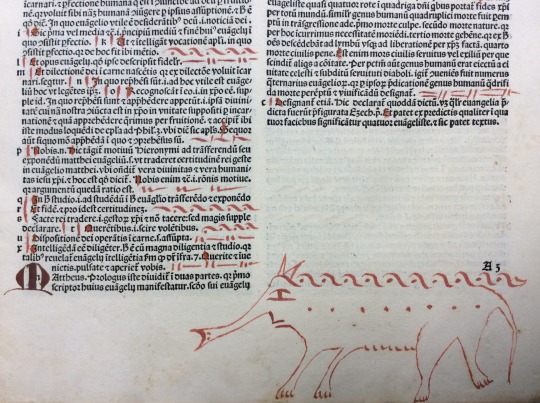
This handsome fellow, drawn in red ink, is an example of a ‘drôlerie’, and is found in the Library’s copy Biblia Latina, printed in Venice in 1489. This was originally a four volume Bible, but our copy only includes this, the fourth volume. The book has a large number of red ink doodles (see below), as well as contemporary marginal notes. Drolleries such as this are commonly found in medieval manuscripts, and incunabula, books printed in the 15th century. They are often grotesque and bizarre figures.
Renae Satterley
Librarian
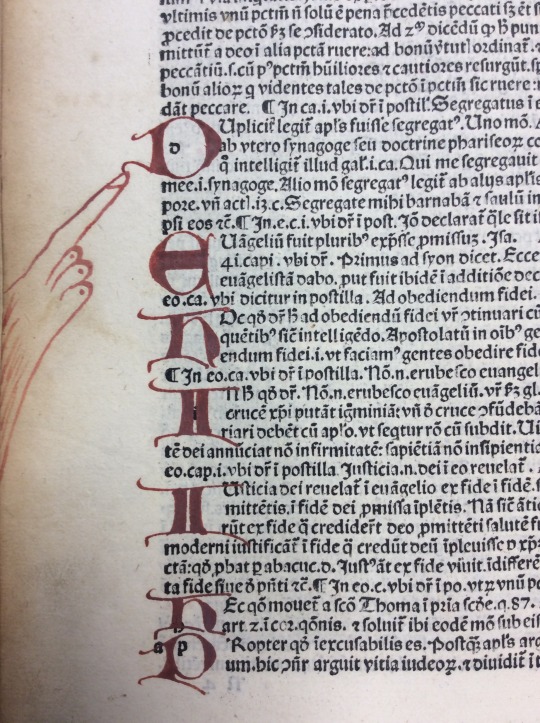




#library#law library#mtlibrary#inns of court#history#rare books#libraries#books & libraries#london#rare book#drôlerie#incunabula#marginalia
81 notes
·
View notes
Text

This 16th-century artwork is of a 'haut', which are said to live in the trees. It has been identified with species of three-toed sloths such as Bradypus variegatus which are found in the forests of Central and South America. This artwork comes from 'Cosmographie universelle' (1575) by the French explorer and writer Andre Thevet (1516-1590). The book describes the history and geography of the lands in which Thevet had travelled. The two volumes contain over 1000 pages divided into 23 books. This woodcut is from chapter XIII of book XXI.
#library#law library#libraries#rare books#history#books & libraries#rarebook#london#mtlibrary#inns of court#sloth#south america#16th century#early printed books#explorer#nature#animals#wildlife#1500s#artwork
376 notes
·
View notes
Text

This incunabule (incunabulum) which was printed in Cologne in c. 1477, belonged to the collection of Robert Ashley (1565-1641). It is a biographical compendium of Church fathers and a history of the early Church. The printed initials are illustrated by hand with these comical figures. This mimics the way manuscripts were produced, a practice that continued beyond the advent of printing in circa 1450.
#library#law library#mtlibrary#inns of court#history#rare books#libraries#books & libraries#london#rarebook#incunabula#church history#drolleries#robert ashley
27 notes
·
View notes
Text

This 17th century woodcut depicts a group of witches adoring the devil. The illustration comes from the Compendium Maleficarum (Collection of the Evil Deeds of Witchcraft) by Francesco Maria Guazzo. Guazzo was an Italian priest and exorcist from the order of Saint Barnaba and Saint Ambrose ad Nemus. This work which describes the practice and profession of witchcraft was first published in 1608.
#library#law library#mtlibrary#inns of court#libraries#rare books#history#books & libraries#london#rarebook#witches#witchcraft#halloween#spooky season#demonology
91 notes
·
View notes
Text
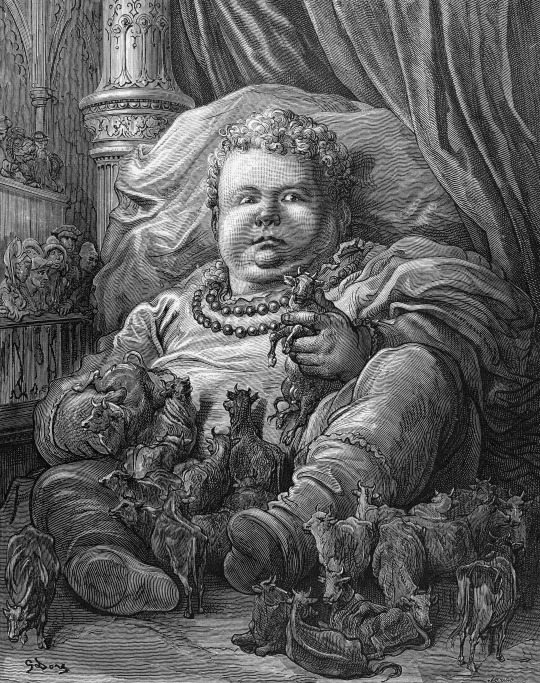
This 19th-century artwork depicts a scene from 'Gargantua and Pantagruel' by French satirist Francois Rabelais (c.1494-1553). Pantagruel, the son of the giant Gargantua, is shown playing with cattle as a baby. The full title of the work is: 'The Horrible and Terrifying Deeds and Words of the Very Renowned Pantagruel King of the Dipsodes, Son of the Great Giant Gargantua'. The story was published in five parts from 1532, with the final part published posthumously in around 1564. This artwork, by French artist Gustave Dore (1832-1883) was published in 'Oeuvres de Rabelais' (1873).
#library#law library#mtlibrary#inns of court#libraries#history#rare books#london#books & libraries#rarebook
184 notes
·
View notes
Text

This 16th Century woodcut print of an bat was published in 'Histoire de la nature des oyseaux' by Pierre Belon (1555). Belon who was a naturalist, writer and diplomat wrote on a range of topics including botony, anatomy and Egyptology.
#library#law library#mtlibrary#inns of court#libraries#rare books#history#books & libraries#london#rarebook#halloween#early printed books#16th century#special collections
122 notes
·
View notes
Text
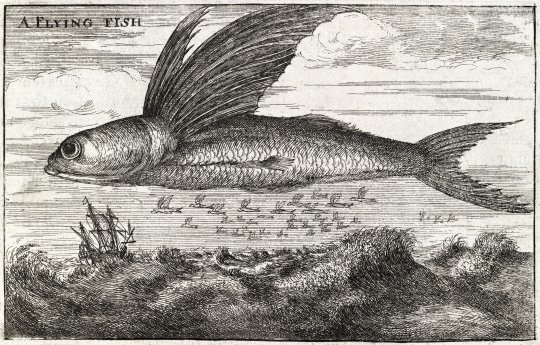
This 17th century artwork shows a flying fish near a ship in stormy waters. This engraving is from 'An embassy from the East-India Company of the United Provinces to the Grand Tartar Cham, Emperor of China', by the Dutch writer and explorer Johan Nieuhof (1618-1672). The book describes Nieuhof's travels to India and China. This artwork is from an English translation, published in 1669.
#library#law library#mtlibrary#inns of court#libraries#rare books#history#books & libraries#london#rarebook#17th century#engraving#johan nieuhof#india#china#travel#travel writing
94 notes
·
View notes
Text

The animal in this engraving is identified as a 'Mus Norvagicus, vulgo Leming' (Norwegian mouse, commonly lemming).The modern Norway lemming is , a common species found in northern Scandinavia and parts of Russia. This engraving comes from Old Worm's Museum Wormianum, published at Amsterdam in 1655.
#library#law library#mtlibrary#inns of court#libraries#rare books#history#london#books & libraries#rarebook#lemmings#17th century#engraving
111 notes
·
View notes
Text
Provenance mysteries: Opera, quae exstant L. Annaei Seneca

This edition’s provenance mystery features a three volume set of the collected work of Seneca: Opera, quae exstant L. Annaei Senecae ; cum integris Justi Lipsii, J. Fred. Gronovii, & selectis variorum commentariis illustrata ; accedunt Liberti Fromondi in quæstionum naturalium libros & [apokolokuntosin] notæ & emendationes, printed by Daniel Elzevir in Amsterdam in 1672. It includes commentaries by the noted Dutch humanist Justus Lipsius and botanist Johannes Fredericus Gronovius amongst others.

As can be seen in the photograph, the book is bound in vellum over boards with a gold-tooled armorial crest on the front (and back) boards. The coat-of-arms has the motto ‘Honi soit qui mal y pense,’ part of the British royal motto, and also used by knights and ladies of the Order of the Garter. The coat-of-arms is probably easily identifiable by someone with the knowledge and skills, but remains a mystery to this writer. There is no other provenance information in the book itself, and no record of its acquisition by the Library.
The book was published during the period when Daniel Elzevir worked with his cousin Louis Elzevir in Amsterdam, printing and publishing a range of classical Latin texts in octavo format, such as this one. The gilt armorial stamp and vellum binding sets this book apart from many of the books in our collection, which tend to have undecorated calf bindings. Vellum and parchment bindings are commonly found in continental libraries, but their presence is not as common in seventeenth century English libraries. Vellum was an expensive material to use as well, suggesting that this was a high status item for its owner.
The book features in the Library’s current exhibition: Mapping the Early Modern Inns of Court. This exhibition highlights some of the areas that the ‘Mapping the Early Modern Inns of Court’ group has explored in seminars and publications: recreation (fencing, revelling, and gaming); literary culture at the Inns; religion and preaching; learning the law and verbal skills; travel and exploration endeavours. Barristers regarded Seneca as a model orator and lawyer, and they frequently studied, quoted, and translated his works. They were taught Senecan verse while still at school, and continued to study, and translate his works as adults.
As ever, if you recognise this armorial device or have further comments please get in touch: [email protected].
Renae Satterley
Librarian
August 2024
#library#law library#mtlibrary#inns of court#history#rare books#libraries#books & libraries#london#rarebook#roman literature#seneca#vellum
12 notes
·
View notes
Text

Animals of Java. This 17th-century artwork features a rhinoceros, an elephant, a tortoise and an iguana. These animals were observed during a Dutch voyage to the East Indies (Indonesia). The artwork is from 'Rerum et urbis Amstelodamensium historia' (1611), a history of Amsterdam by Dutch-Danish royal historiographer Johannes Isacius Pontanus (1571-1639). This book includes descriptions of the first Dutch voyage to the East Indies in 1595 by Cornelis de Houtman. Javan elephants went extinct by the end of the 18th century but some survived on Borneo.
From Middle Temple Library's early printed books collections
#library#law library#mtlibrary#inns of court#libraries#history#rare books#london#books & libraries#rarebook#early printed books
114 notes
·
View notes
Text

Provenance mysteries: A lively antithesis, or opposition, betweene the Church of Rome and the true church of God
This edition’s provenance mystery features Thomas Bedell’s A lively antithesis, or opposition, betweene the Church of Rome and the true church of God, printed in London by R. B[lower] for Roger Jackson in 1604. The author may be the Thomas Bedell who, according to the History of Parliament website, got into an argument with John Brudenell regarding the loyalty of Catholics, in relation to James VI and I’s Oath of Allegiance. The 1606 Oath of Allegiance was a response to the Gunpowder Plot, and required Catholics to swear allegiance to the King, not the Pope. The Bedell/Brudenell argument led to a Star Chamber case (National Archives, STAC 8/11/23). This is a very rare book, with only two copies recorded in ESTC and USTC.

As can be seen on the title page, the book has been signed. Unfortunately, bookworm damage has obscured what is presumably the first name of the inscription completely. The surname of ‘Lugger’ is visible, however. Given the date of publication, the full name could be that of William Lugger/Luggar/d. William was a bookseller and publisher, who was active between 1597 and 1658 (the year of his death). He moved shop throughout his career, and was variously based at Holborn, Ludgate, and near the Tower of London.
The link to Lugger is potentially made more credible when examining the second photo, herein, which depicts the inside front binding of Daniel Mögling’s De chymiatria theses practica, 1595. The inscription reads ‘of Mr Lugger 1619 Aug 28,’ and is in Robert Ashley’s hand. This note suggests that Ashley purchased the book from Lugger who, in 1619, would have been based near Middle Temple, in Holborn. Ashley of course was the founder of Middle Temple Library.
As ever, if you recognise this hand or have further comments please get in touch: [email protected].
Renae Satterley
Librarian
March 2024
#library#law library#mtlibrary#inns of court#libraries#rare books#history#books & libraries#london#rarebook
21 notes
·
View notes
Text
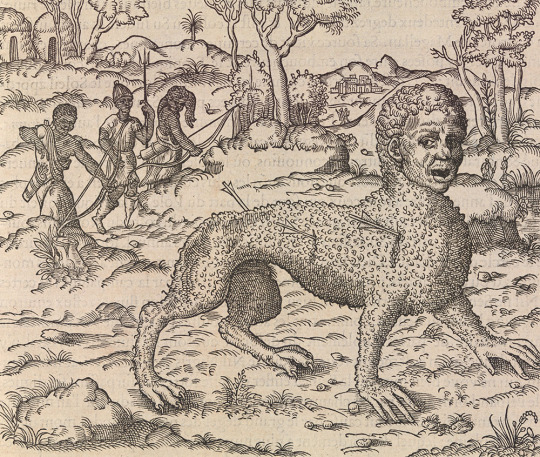
This 16th-century artwork shows a group of hunters attacking a 'thanacth'. This mythical creature was believed to live in the Calcutta region of India. This artwork comes from 'Cosmographie universelle' (1575) by the French explorer and writer Andre Thevet (1516-1590). The description of this creature resembles that of a tiger.
#library#law library#mtlibrary#inns of court#libraries#rare books#history#books & libraries#rarebook
58 notes
·
View notes
Text


Our assistant librarian, Jake Hearn discovered these two images while cataloguing the Library’s 18th century copy of Johannis de Fordun Scotichronicon: a 5-volume Mediaeval account of Scottish history by John Fordun (1360 – c. 1384)
The original work took the format of a Gothic manuscript, a copy of which is now housed at the British Library (Harley MS 4764).
Jake also found this old article from 1898 which provides some explanation to the two images.
“King Henry, in 1257, after marching to Chester, ‘unfurled his royal banner like a dragon {quasi draconem) which knew not how to spare, and threatened Wales with general extermination.' During the barons' war (see Blaauw, ed. 1871, pp. 190, 191), the dragon was turned against Englishmen, fulfilling, albeit by anticipation, the poetical prediction that one day they would be 'seized in the dragon's mouth' (Bower's Scotichronicon , ii. 309)”
#library#law library#mtlibrary#inns of court#libraries#history#rare books#london#books & libraries#rarebook#dragon#dragons#gothic#medieval#middle ages
77 notes
·
View notes
Text

This engraved Artwork comes from a 1619 French edition of Schouten's account of his voyages ( Journal ou relation exacte du voyage de Guill. Schouten, dans les Indes). The artwork shows six explorers who circled the globe. In the upper left is Ferdinand Magellan (Portuguese, 1519-1522), with the ship Victoria from his fleet. At upper right is Willem Schouten (Dutch, 1615-1617), with his ship Eendraght. Down left: Francis Drake (English, 1577-1580) and Olivier van Noort (Dutch, 1598-1601). Down right: Thomas Cavendish (English, 1586-1588) and Joris van Spilbergen (Dutch, 1614-1617). The map shows the Schouten-Spilbergen route.
#library#law library#mtlibrary#inns of court#libraries#rare books#history#books & libraries#london#rarebook#17th century
36 notes
·
View notes
Text
Online Exhibition

Have you seen our exhibition on Islam, Astronomy & Arabic Print yet?
See it online here!
Tip: click on the social media icon in the right-hand corner of the text cards to see the corresponding images.
58 notes
·
View notes
Text
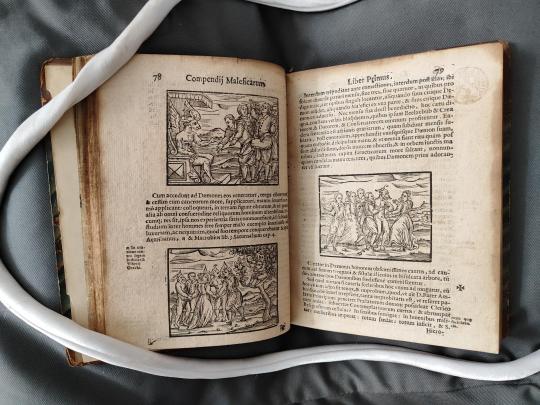



We hosted a special Halloween event at the Library today. The 17th century works on display covered a variety of topic including witchcraft, magic and demonology. The highlight was probably the Compendium maleficarum shown in the first photo. The text is an encyclopedic work on the study of witchcraft and demonology.
#library#law library#mtlibrary#inns of court#libraries#rare books#history#books & libraries#london#rarebook#halloween
28 notes
·
View notes